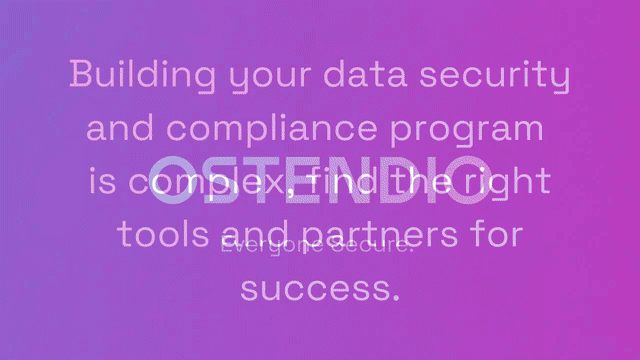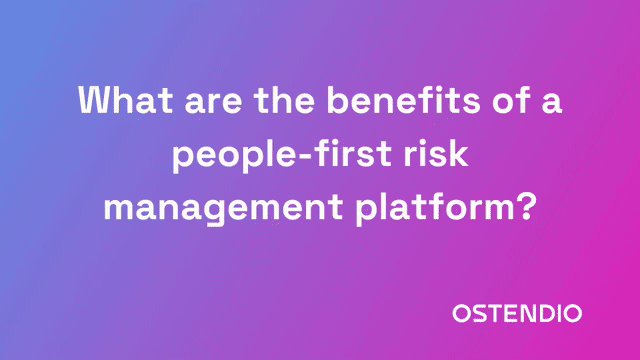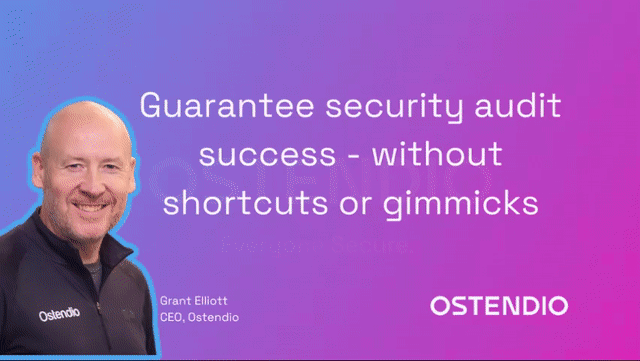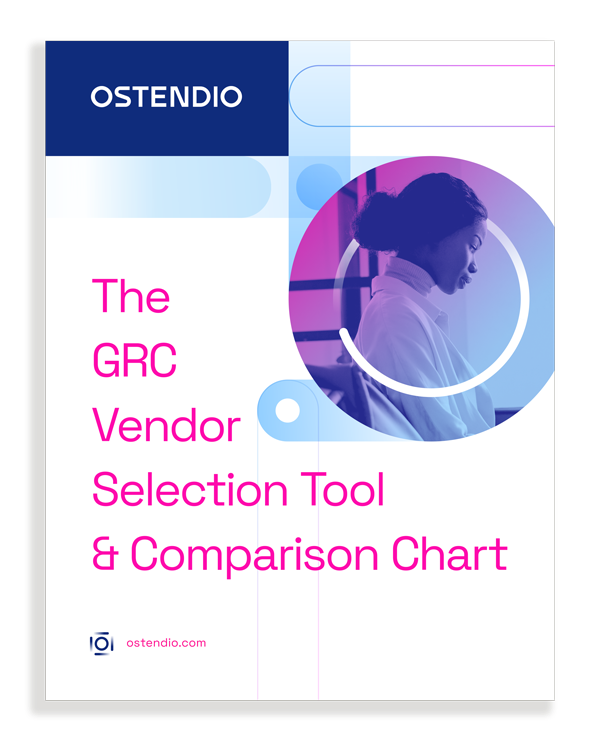[5 minute read]
How to Master GRC Selection and Navigate the Impact of Market Consolidation
In an age of cyberattacks, IT security frameworks - such as SOC 2, HITRUST, and ISO 27001 - have become critical signals of operational trustworthiness and effective risk management practices. These security frameworks require an organization to build and demonstrate compliance with hundreds of security controls.
As a result, the market has seen a proliferation of GRC and security compliance platforms to help clients operationalize information and data security protocols across organizational processes and demonstrate evidence of this security to potential partners and clients.
Recently, evolving market expectations and industry consolidations have prompted client organizations to explore alternatives to their existing GRC tools. At Ostendio, we commonly speak to CISOs and other security and compliance professionals seeking assistance incorporating security practices into their overarching operational process. Some are looking for a "better mousetrap”. In contrast, others, like KnowBe4 (GRC) customers, are concerned about the sunsetting of the KCM solution and are looking to transition to a tool that can help them keep up with the latest security regulations and requirements.

Above: Hear from Michael Lareau, VP Solution Engineering, Sourcepass
If you are one of the many security and compliance professionals seeking enhanced functionalities such as expanded access to crosswalk across multiple compliance frameworks, purposeful integrations into popular platforms and tools, or integrated security training, you're not alone.
[See an overview of the Ostendio platform here.]
Irrespective of the rationale behind considering a change or evaluating alternative GRC tools, it is important to prioritize three key functionalities during your assessment of GRC solutions:
Key GRC Platform Functionalities To Prioritize
1. Adaptability to Technological Changes and Comprehensive Frameworks:
GRC tools must keep pace with rapidly evolving technology landscapes and offer the necessary compliance frameworks. What was cutting-edge just a few years ago may no longer suffice as organizations grow and mature. Finding a platform that allows customizable frameworks is essential because a limited number of pre-built frameworks will not meet the complex needs of your growing business in the future. Organizations that are serious about security will also be looking for complex and rigorous frameworks, including HITRUST, to be included in the tool that they select.
2. Customized User Experience:
The user experience, including training, onboarding, and user interface, plays a pivotal role in the successful adoption of a GRC tool.
For example, while many GRC tools tout integrations to popular platforms and SaaS applications, most merely provide a data snapshot, which will not satisfy the requirements of a credible auditor. Auditors want to know the actions taken 'behind the checkmark'. Select a GRC provider whose third-party integrations are architected to be actionable and enable you to align your tech stack integrations with business goals to enhance decision-making, take immediate action on non-compliant items, and accelerate compliance timelines - without compromising security.
In addition, most platforms offer employee educational and training programs that are generic in nature and cannot be customized to specific departmental educational needs. Select a GRC platform that enables administrators to tailor security training to your organization's specific needs to give you the flexibility to determine training frequency and track completion.
3. Real-Time Data Access and Crosswalk of Evidence:
To effectively manage security and compliance, a GRC tool should grant access to real-time data and facilitate the cross-referencing of evidence, ensuring that your organization remains well-prepared to address evolving risks and regulatory requirements. These capabilities are essential for maintaining the integrity of your security and compliance program. The ability to crosswalk evidence from one framework to another without spending more on your compliance program is essential to any growing business.

Above: Hear from Richard Gaglio, Health Recovery Solutions
Learn more about GRC tools and how to evaluate them
If you need help navigating the process of finding a GRC tool and help evaluating your next step, check out these free resources:
Look at this 5-step checklist to help you choose the right GRC tool for your organization. Steps include: identifying your goals and requirements, comparing tools on the market, and evaluating the cost. Read here for the full details.
It may seem like a daunting task to get everyone onboarded to a GRC platform. But remember, software adoption within the entire organization can take time to work into everyone’s routine. With the help of an implementation schedule, you can efficiently transition your current security program and your people to a new platform. By involving all team members from all departments you are on your way to building a culture of security in your organization.
When you start the research into GRC tools for your business, questions may arise such as:
-
How much does a GRC tool cost?
-
Which GRC platforms align with our business practices and security needs?
-
What GRC features will enable your organization to reach your security and compliance goals?
This guide offers a comprehensive breakdown with answers to these questions, including the benefits of a GRC tool, cost estimations, and features you should consider.
Numerous constraints are associated with conventional GRC tools, prompting organizations to transition towards Integrated Risk Management (IRM) solutions that seamlessly embed data security and risk management across their entire operational spectrum. In this article, we delve into the seven critical limitations of traditional GRC tools and share why IRM represents a superior approach.
Justifying a compliance investment is a challenging undertaking. After all, you’re already investing several resources to manage security compliance. To help you quantify the ROI on a security and compliance management tool, we’ve calculated time savings based on historical data of small to medium-sized organizations using three core compliance transactions: documents, training, and tasks. Investing in a robust compliance and security platform can pay dividends to ensure your organization and your people are continuously secure while improving work efficiencies.

Above: Ostendio CEO, Grant Elliott, talks about the Ostendio Audit Guarantee
Get in touch with a security expert to talk through your security and compliance planning. We can talk you through the migration from KCM to the Ostendio platform and show how your organization can benefit from an integrated risk management platform.

September 29, 2023

Comments